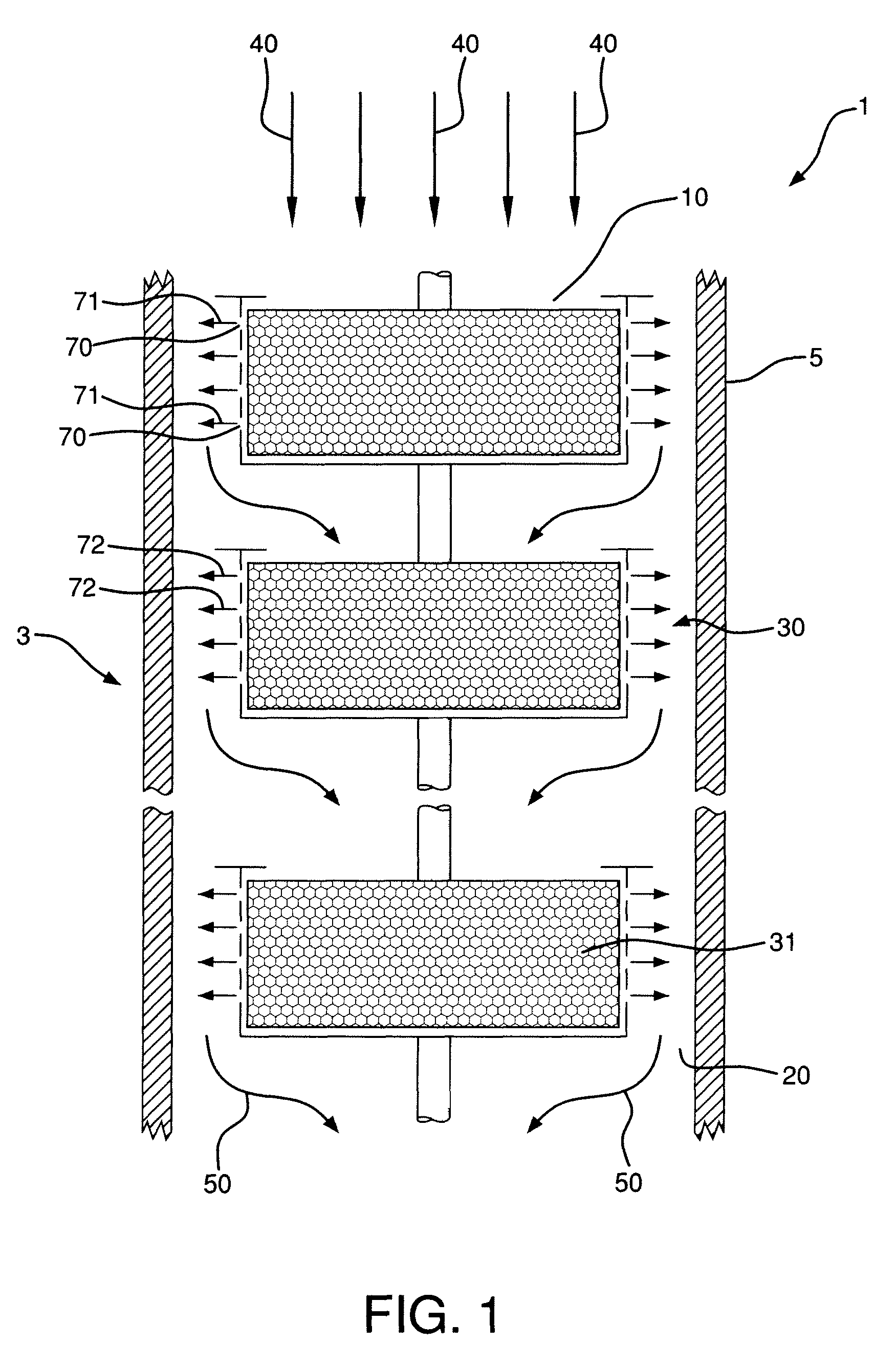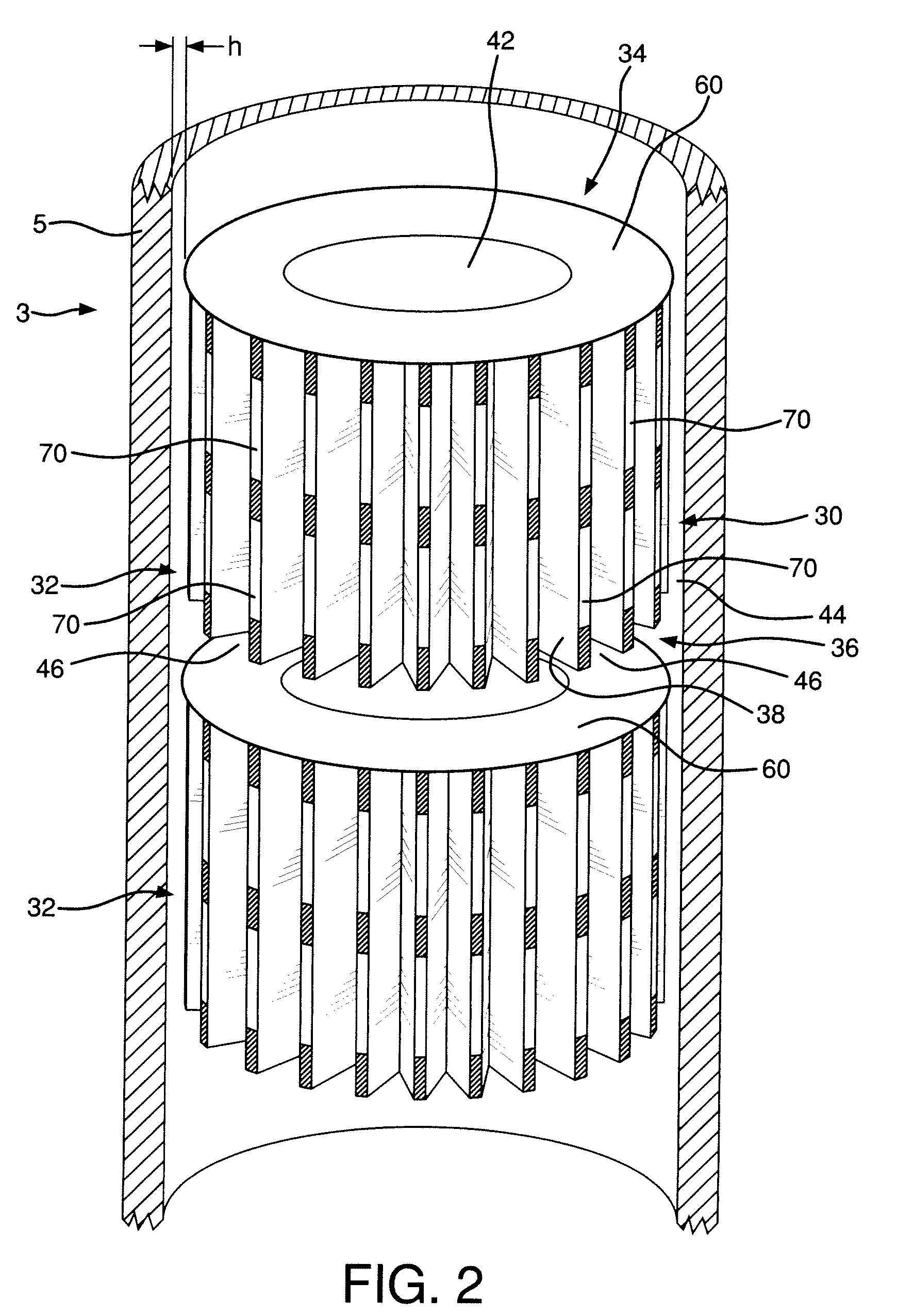Tubular reactor with jet impingement heat transfer
a tubular reactor and heat transfer technology, applied in the field of tubular reactors, can solve the problems of increasing the diameter of the tube and correspondingly increasing the gap between the tube wall and the structured packing
- Summary
- Abstract
- Description
- Claims
- Application Information
AI Technical Summary
Benefits of technology
Problems solved by technology
Method used
Image
Examples
example
[0146]The technical effect of the plurality of orifices for jet impingement heat transfer was investigated using Computational Fluid Dynamics (CFD) modeling.
[0147]CFD modeling was validated against heat transfer experiments.
[0148]Heat transfer experiments were carried out for various packings. The heat transfer coefficient was measured as a function of the pressure drop through the tube. The experiments were conducted using air as the fluid and the tube was electrically heated. The experiments were conducted at roughly atmospheric pressure and ambient temperature. The heat transfer coefficient was calculated from wall temperature measurements for various flow rates.
[0149]The results of CFD simulations are compared to experimental data in FIG. 5. for the “cup design,” similar to the structure illustrated in FIG. 2. In the “cup design,” the spacing between the orifice opening and the tube wall is about 3 mm. The metal structure had a length of about 66 mm, with a 18 mm distance betwee...
PUM
| Property | Measurement | Unit |
|---|---|---|
| pressure | aaaaa | aaaaa |
| temperature | aaaaa | aaaaa |
| angle | aaaaa | aaaaa |
Abstract
Description
Claims
Application Information
 Login to View More
Login to View More - R&D
- Intellectual Property
- Life Sciences
- Materials
- Tech Scout
- Unparalleled Data Quality
- Higher Quality Content
- 60% Fewer Hallucinations
Browse by: Latest US Patents, China's latest patents, Technical Efficacy Thesaurus, Application Domain, Technology Topic, Popular Technical Reports.
© 2025 PatSnap. All rights reserved.Legal|Privacy policy|Modern Slavery Act Transparency Statement|Sitemap|About US| Contact US: help@patsnap.com



